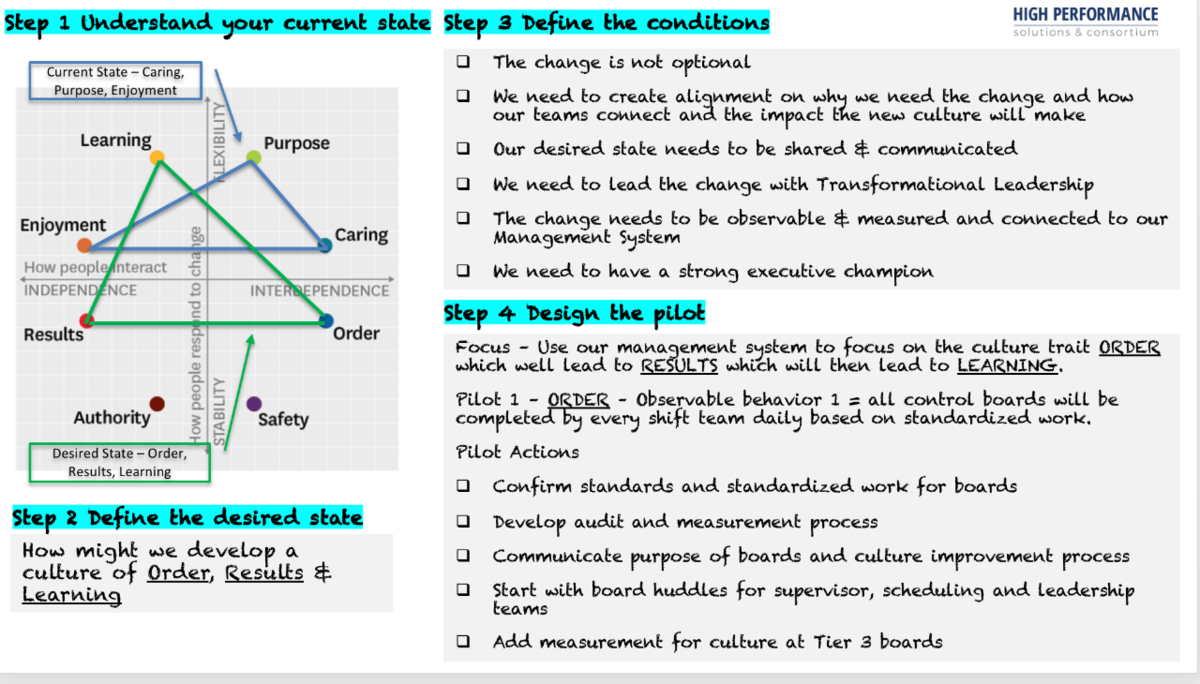|

When your team understands what your organization’s values mean, how they connect to the values and how they can observe values in action, research tells us that they are 51 timesmore likely to be actively engaged employees.
So where do values fit into culture?
Culture is behaviour that is supported, expected, reinforced & valued by a group of people over a long period of time. Culture is typically based on an unwritten set of rules. Values are an attempt to establish the rules of culture.
Values are typically defined by organization’s senior management group. The values are communicated to employees and then senior management will sit back and wait for the magic to happen (which rarely ever does).
In order for values to impact culture, we must have a deliberate approach and follow our PDCA (Plan, Do, Check and Adjust) model.
For example, one of the 8 traits of culture is ORDER. ORDER is having a respectful workplace, having a structured workplace that allows teams to function well and having shared norms or values. One of the values that supports ORDER is accountability. Accountability is a very broad term and has a different definition for most people. One option is to get your team to define what accountability means to them. One definition could be people say what they are going to do and actually do it. This is better but may not be observable. To make accountability observable, the team can define the value as an observable behaviour, such as team commitment to updating their visual performance white boards on a daily basis.
What is observable can now be measured. At HPS Consortium, we have been using the 28-day experiment to measure behaviours. If a task is completed 28 times in a row, it will typically will become a habit or permanent behaviour. In this case, we would use a calendar to measure the update of the boards 28 days in a row (observed is a green check, non-observed is a red check and red check means start over at day one).
The value of accountability is now connected to ORDER as the team supporting an element of a structured workplace.
Remember, you have to be deliberate to enhance your culture and once you start, you need to pay attention to the results.
|